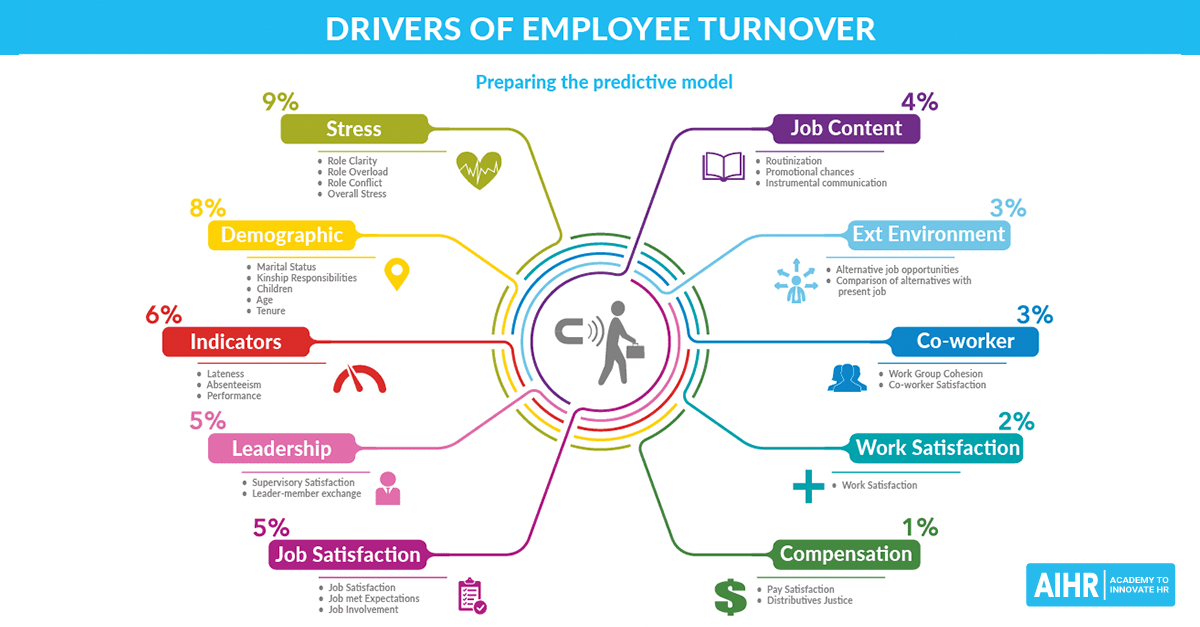Employee Turnover
What is Employee Turnover?
Definition:
“Employee Turnover” refers to the rate at which employees leave a company, measured over a specific period. It is a critical human resources metric that reflects the number or percentage of employees who exit an organization voluntarily or involuntarily, typically expressed annually. Employee turnover can be categorized into voluntary (employees leaving by choice) and involuntary (employees leaving due to termination or layoffs).
Analogy:
Think of employee turnover as the ebb and flow of a river. Just as a river experiences a constant movement of water, organizations experience a continual movement of employees entering and leaving the workforce.
Further Description:
- Voluntary Turnover: Occurs when employees choose to leave the company. Reasons for voluntary turnover can include career advancement opportunities, dissatisfaction with the work environment, or seeking a better work-life balance.
- Involuntary Turnover: Involves employees leaving the organization due to factors beyond their control, such as layoffs, restructuring, or performance-related terminations.
- Calculating Turnover Rate: The turnover rate is calculated by dividing the number of employees who leave during a specific period by the average number of employees during that same period, multiplied by 100 to express it as a percentage.
- Impact on Organizations: High turnover can have negative consequences, including increased recruitment costs, loss of institutional knowledge, and a potential decline in team morale and productivity.
Why is Employee Turnover Important?
- Cost Implications: High turnover can result in increased recruitment and training costs as organizations invest in replacing departing employees.
- Employee Morale: Frequent turnover can impact the morale of remaining employees, affecting team cohesion and overall job satisfaction.
- Productivity and Knowledge Loss: Each departing employee takes with them a set of skills and knowledge. High turnover can lead to a loss of institutional knowledge and potentially impact productivity.
Examples and Usage:
- Exit Interviews: Conducting exit interviews with departing employees to understand the reasons behind their decision to leave and gather insights for improvement.
- Turnover Analysis: Regularly analyzing turnover rates to identify trends, patterns, and potential areas for improvement in employee retention strategies.
- Retention Programs: Implementing employee retention programs, such as professional development opportunities, competitive benefits, or flexible work arrangements.
- Succession Planning: Developing a robust succession plan to ensure that key roles are quickly filled when employees depart, minimizing disruptions.
In summary, employee turnover is a crucial metric that reflects the movement of employees into and out of an organization. Understanding and managing turnover is essential for maintaining a stable, motivated, and productive workforce.
Key Takeaways:
- Employee turnover measures the rate at which employees leave an organization voluntarily or involuntarily.
- It can be categorized as voluntary (employees leaving by choice) or involuntary (employees leaving due to termination or layoffs).
- High turnover can have cost implications, impact employee morale, and result in a loss of productivity and knowledge.





